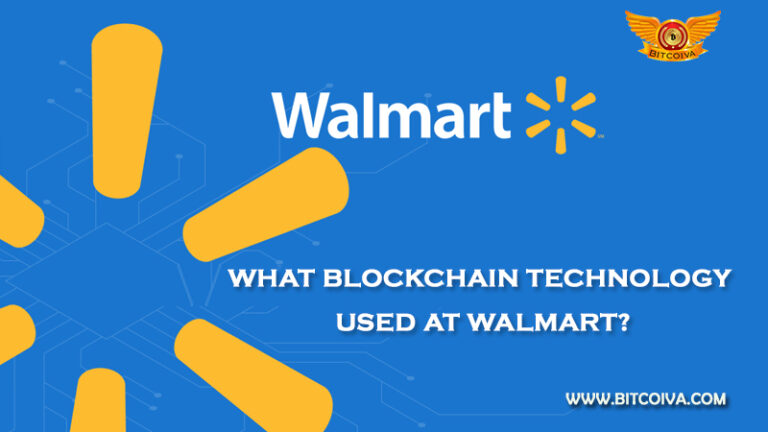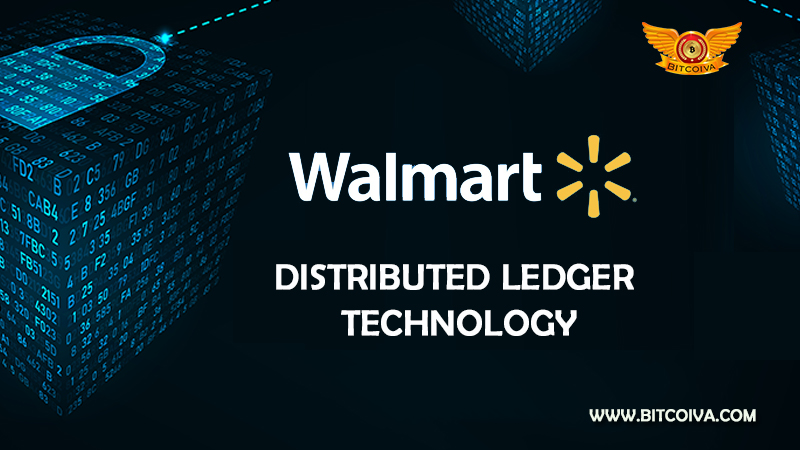Walmart the big industrial store implemented blockchain technology in their stores. “IBM introduced us to Hyperledger Fabric. We researched other projects, including Burrow and Ethereum. Ultimately, we chose Hyperledger Fabric since it satisfied the majority of our requirements for a blockchain system, according to Bedwell. “We thought it best satisfied our demands. It permissioned and uses enterprise-grade blockchain technology.
One of The Linux Foundation’s Hyperledger projects, Hyperledger Fabric is a blockchain framework implementation. With Hyperledger Fabric, which serves as platform for creating applications. Or solutions with a modular design, parts like consensus and membership services easily installed and used. The application logic of the system composed of smart contracts, also known as “chaincode,” which hosted by Hyperledger Fabric using container technology.
How did Blockchain Pop-Up in Walmart
Additionally, the group felt it was crucial to use an open-source, vendor-neutral blockchain. The technical ecosystem supporting the food traceability system needed to be open. Because it intended to used by numerous parties, including Walmart’s suppliers and even direct rivals.
Walmart has a long history of being a supply chain management pioneer. But despite its strength, it was unable to escape an issue. That had plagued the transportation sector for years: significant data errors in the invoice and payment processes for freight carriers. Which necessitated expensive reconciliation efforts and resulted in protracted payment delays. Then, Walmart Canada developed a breakthrough remedy: it used blockchain, a distributed ledger technology, to build an automated system for controlling invoicing from and payments to its 70 third-party freight providers.
The effort got its start when John Bayliss, one of us. And his Walmart Canada team started considering fresh approaches to the issue. The sheer amount of data was enormous. Walmart Canada uses both its transport fleet and outside carriers to deliver over 500,000 shipments each year to distribution centres and shops all across the country.
Blockchain in Walmart
It is a tremendous operational difficulty to move a large volume of goods. Many of which are perishable—across borders, time zones, and several climates. Each invoice must separately calculate and include tracking data points. Such as stop locations, fuel consumption, and temperature updates, for each cargo sent. It is simple to understand how the invoice and payment process may be rife with data discrepancies given. That over 200 data points have to be taken into account when creating invoices.
Additionally, there were higher transaction costs and disgruntled carriers waiting for payments because 70 percent of bills required reconciliation procedures.
The utilisation of numerous information systems by Walmart Canada and its carriers. That were unable to communicate with one another found to be the primary contributor to the issue. As a result, reconciliation had to be done by hand, which time-consuming, labour-intensive process full of errors.

Which Walmart Implement First Blockchain
One of Walmart Canada’s tech executives proposed automating. The procedure by establishing a blockchain network, which would get over the issue of incompatible corporate systems. And create a common single source of truth for all parties. However, there were detractors as blockchain technology had not yet applied in a significant, crucial business function?
Additionally, there were other blockchain variations. Would a private blockchain network be preferable to a public blockchain network like those used for cryptocurrencies?
First Walmart store
Walmart Canada sought assistance from DLT Labs, a pioneer in creating and implementing cutting-edge business solutions with distributed ledger technology. Bison Transport, one of Walmart Canada’s carriers, soon joined the group in charge of creating a network. After extensive testing, a pilot version that at first only included Walmart Canada and Bison Transport became live in January 2019. Because of its effectiveness, the network—known as DL Freight extended to 69 additional carriers in March 2021.
Every step of the process, from the carrier’s tender offer to the acceptance of payment and the evidence of delivery, is where the system continuously collects information. Only the parties involved in the transaction may see this information, which automatically collected and synced in real-time.
The system has, by all accounts, been a huge success. Over 70% of invoices challenged before DL Freight. Less than 1% of invoices now are in dispute, and these cases may easily identified and settled swiftly. Carriers now paid on time; gone are the days when payments took weeks or months.
Rise of DL Freight Blockchain Technology
Walmart Canada and DLT LabsTM unveiled the largest industrial blockchain platform in full production a year ago. In addition to being a milestone for distributed ledger technology, the system created the first intelligent supply chain network, allowing numerous firms to instantly communicate protected information. The potential to address an issue that had bedevilled logistics and supply chain management for decades was simply too good to pass up between the two firms, each of which possessed diverse competencies and shared a passion for innovation. The outcome’s success is evidence of the team’s unwavering resolve to constantly question the status quo by asking, “How can we do this better?”
Fulfilling that commitment required Walmart Canada (Walmart) to re-evaluate its freight transportation logistics, which allows it to stock more than 400 locations across the country with roughly 120,000 unique products. To achieve this, Walmart collaborates with countless companies to make sure that overall, and with appropriate allocations to each shop, it is adequately stocked to serve more than 1.2 million consumers each day.
How DL Freight Blockchain Works
According to Neeraj Srivastava, co-founder, and chief technology officer of DLT LabsTM, “Walmart places significant significance on its cooperation with third-party transportation providers, referred to as “carriers.” The carriers must maintain efficiency and the best working relationships because they are a key component of Walmart’s supply chain and handle a wide range of transportation.
A productive partnership is around controlling a vast and continuous flow of information while making sure the carriers are paid on time. Although it can seem simple, the industry is quite sophisticated.
Deliveries are made at all times of the day and year by carriers. It is a capital-intensive industry, and each delivery is subject to a high level of volatility (fuel prices, delays, unexpected events). The carriers and the beneficial cargo owners (BCOs), such as Walmart, share the risk of price changes and unforeseen events under the business model that has developed. Each invoice includes both set fees and variable fees known as “accessorial fees.”
DL Freight
Although in theory, it creates a strong partnership with complementary interests, the sheer number of variables makes it extremely complex in practise. Every load a carrier delivers commonly has billing disputes that are in the range of 70% or more. Invoice reconciliation frequently resulted in one side or the other caving in disputes, even though different service providers tried to address this conundrum by utilising the entire range of available technology, typically by doing a “match and compare” analysis.
In order to create a solution that would end this enduring issue once and for all, Walmart Canada sought the assistance of DLT LabsTM, a global pioneer in the development and deployment of a revolutionary enterprise-level platform employing distributed ledger technology.
Visit us on: www.bitcoiva.com


Comments are closed.